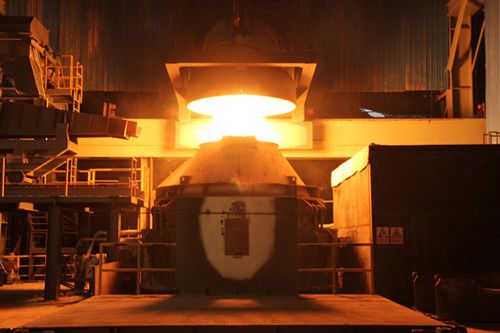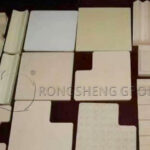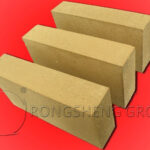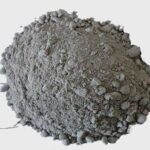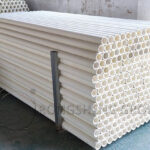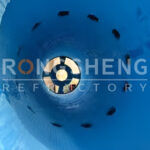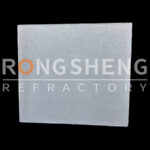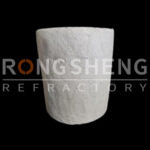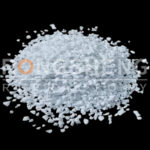Factors Affecting VOD Furnace Refractories Serving Life
AOD furnace smelting temperature is very high, acid slag and basic slag are formed in different smelting period, meanwhile, fierce gas fluxing is occurred during oxygen blowing. Under synthesized action of various smelting conditions, AOD furnace lining refractories will be damaged gradually.
Factors Affect AOD Furnace Lining Refractories Service Life
- Rebinding magnesia chrome bricks is easier to be corroded with the increasement of slag alkalinity. Service life is longest when slag alkalinity is between 1.2~1.5.
- The higher MgO, Cr2O3 and Al2O3 ratio is in slag, the slower magnesia chrome bricks corrosion rate will be.
- Reductant is apt to react with Cr2O3 and FeOn in magnesia chrome bricks, thus bricks’ structure is destroyed and brick grains will be scoured by steel liquid. Cr content in steel liquid is also hard to be controlled.
- During smelting Al/Si killed steel, Al killed steel will have lower refractory material corrosion rate than Si killed steel. Because Si and Mn in alloy steel will increase corrosion rate of refractory lining.
- Between 1600℃~1750℃, per increasement of 100℃, magnesia chrome refractory material’s dissolving rate will increase 4~5 times, while magnesia calcia refractory will increase 2~3 times.
- Magnesia chrome bricks will suffer smelting atmosphere influence, Cr and Fe in magnesia chrome bricks will have valance alternation and generate large volume change effect, brick’s structure is destroyed.
- Fluorite in slag and Al2O3 will react with magnesia calcia brick and form low viscosity, low melting point eutectics, so corrosion rate is accelerated.
- Magnesia calcia material has better low basicity slag corrosion resistance than magnesia material, while MgO refractory has better high Al2O3 slag or high iron slag corrosion resistance than magnesia calcia refractory.
- Air blowing angle will have great influence on corrosion rate, generally, back angle of inclination is between 5°~7°.
- For low alkalinity slag, magnesia chrome bricks have better corrosion resistance than magnesia calcia bricks, for high alkalinity slag, magnesia calcia bricks have better corrosion resistance than magnesia chrome bricks.
- The dissolution rate of magnesia chrome refractory and magnesia calcia refractory in acid slag is in proportion to the 0.7 power of rotation speed.
- When slag alkalinity is less than 1.3, high temperature solid phase magnesia chrome refractory’s slag corrosion resistance ability is Cr2O3>MgO-Cr2O3>MgO>MA>Al2O3.
- The lower porosity rate is, the better slag corrosion resistance ability is.
- In magnesia calcia bricks, slag permeation resistance and spalling resistance is increased with the increase of MgO content.
- The denser raw material is, the evener composition distribution is, the better slag corrosion resistance is.
- Rebinding magnesia chrome bricks has poor spalling resistance than direct binding magnesia chrome bricks.
- The decrease of Cr2O3 in firebricks will weaken its permeation resistance, crack resistance and corrosion resistance.
- The higher sintering temperature is, the slower corrosion rate is.
Measures to Prolong AOD Furnace Lining’s Service Life
- Increase MgO and Al2O3 content in slag, when their contents approach saturation state, magnesia chrome brick lining can have a longer service life. Increase MgO and CaO content (dolomite slag making) in slag to a saturation state, magnesia calcia brick lining’s serving life can be prolonged.
- Properly decrease smelting temperature is beneficial for prolonging service life.
- Speed up smelting tempo, shorten smelting time can contribute to prolonging service life.
- Enhancing furnace heat preservation, reducing temperature fluctuation are very important for reducing furnace lining spalling.
- Choose high density, high strength and highly direct bonded magnesia chrome bricks and magnesia calcia bricks.
- According to operation condition, especially slag alkalinity and interval time to choose corresponding Magnesia chrome bricks and magnesia calcia bricks.
